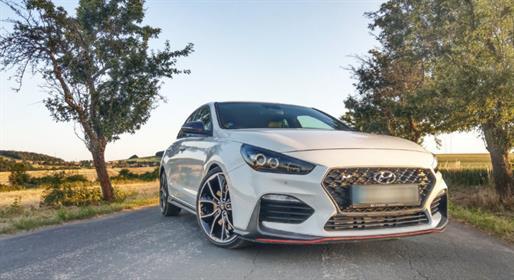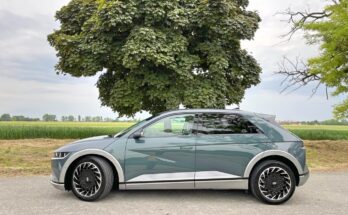The Hyundai i30 N Performance, this sharp hothatch, passed our editorial test back in the summer of last year. It is widely known that Hyundai invaded the sports car market with great fanfare with this model, and the name of Albert Biermann, the former head of the M division (BMW), who was involved in the development of this car, was inflected everywhere.
Yes, the newly created "enko" is a great and very balanced car that offers many riding styles. Its universality and the extreme positions of the driving modes are really very diametrically opposed.
With the introduction of the new "fastback" version of the body of the classic I30 model, it was only a matter of time before this version also received the N designation, or better yet, N Performance.
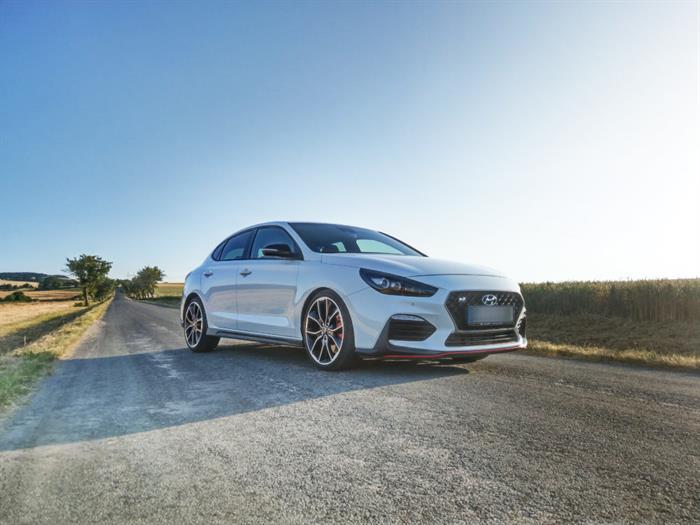
That time has just arrived and I picked up ani30 Fastback N Performance in a very classy 'Polar White' finish for a week's test.
The excitement is huge because you simply know what you're getting into. Those magical buttons on the steering wheel that change the characteristics of this car from a quite calm companion for everyday driving to a beast that has a huge pull, burns automatic intermediate gases and, on request, shoots out the exhaust.

Fastback claims a sporty character
This second body variant in Performance equipment again offers great-looking nineteen-inch wheels, massive sharply cut bumpers, or red accessories that are clearly visible in the brake pads themselves or in the lines of both bumpers.
Standing before the choice of body design (hatchback x fastback) is definitely not easy. Boot size aside, each offers a very distinctive approach when dealing with the rear. The hatchback comes with a distinctive roof lollipop with an integrated brake light, while the fastback comes with an elegant tear-off edge and a central fog light, which is then located in the lower part of the bumper.
Personally, I am more inclined towards the currently tested "fastback" version, which optically supports the sporty character of this car more.
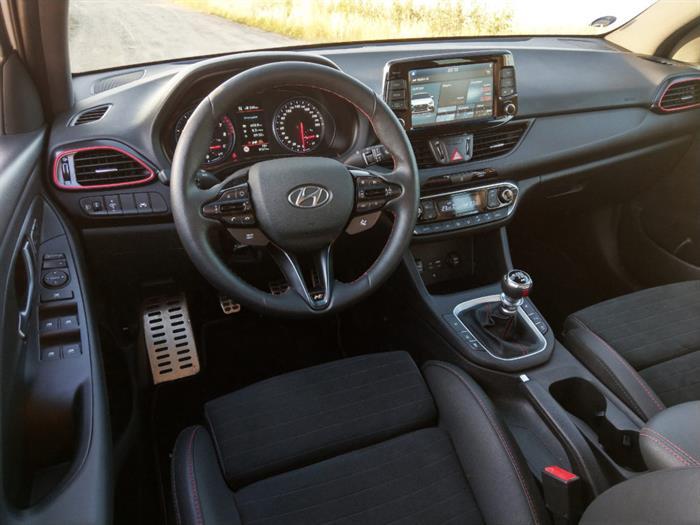
Interior without major changes
The new i30 Fastback N has a very similar interior to the classic i30 N. We will see small differences only in the use of red color, which is newly sewn on the steering wheel, the gear lever, or the seats themselves, the air conditioning vents are also highlighted in red. Other differences include the color of the "magic" buttons on the steering wheel, which are no longer blue, but black. The multifunctional steering wheel itself deserves great praise for its massive crown. I would then describe the gear lever as excellent, its round head fits perfectly in the hand and the gear lever itself has short and precise paths.
The instrument panel of the "enka" version is of course not deprived of LEDs showing where it is currently appropriate to turn the engine and diodes showing the ideal time for shifting.
The fastback body will then offer a larger luggage compartment with a volume of 436 liters, which also has better access.
Ergonomically, the interior works very well, and I also have to praise the front seats for their lateral guidance. The weak side is a certain austerity and minimal difference in the interior from the classic 1930s.
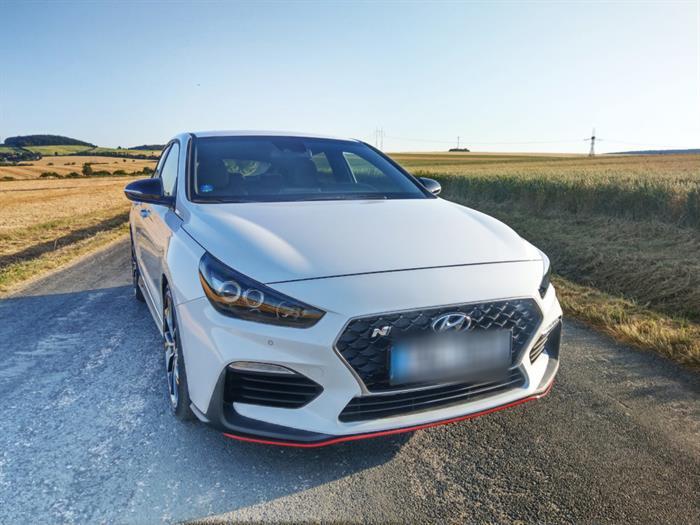
Driving performance
The tested fastback and its body design have no significant overlap in the excellent driving performance that the classic i30N Performance already had in the past. Yes, there are certain nuances with the passing of time, mainly on the chassis, which should be a bit more civilized than it used to be with the previous sharp hatchback. Another change is the presence of a particulate filter, which has reduced the exhaust system by a few decibels. Even so, the sound of this car is famous, the way it "grunts" when you lightly tease it with the gas, or how it shoots under full throttle, these are addictive things that are really hard to describe.
The offered variety of driving behavior of this car is huge. I completed many highway and city kilometers with "enko", which I sometimes crossed through some Czech district. In other words, I made a lot of use of changing the driving modes themselves. I admit that most often it was economy mode and then N Custom mode. In economy mode, the car is very quiet and user-friendly. In terms of consumption, I was slightly under the 8 liter limit in this mode.
My second most used N Custom mode is the fully adjustable mode. The setting mainly concerns the response of the engine, chassis, differential, steering or exhaust flap. Here the choice is entirely yours. Other modes include Normal, Sport and, rather, the circuit ultimate mode N, which, unfortunately, with its hardness, does not quite match the state of Czech roads.
The interplay of this engine, transmission, differential, chassis and steering makes the "enka" a real driver's car to get used to. The car certainly doesn't give you anything for free, but driving it is authentic and simply great.
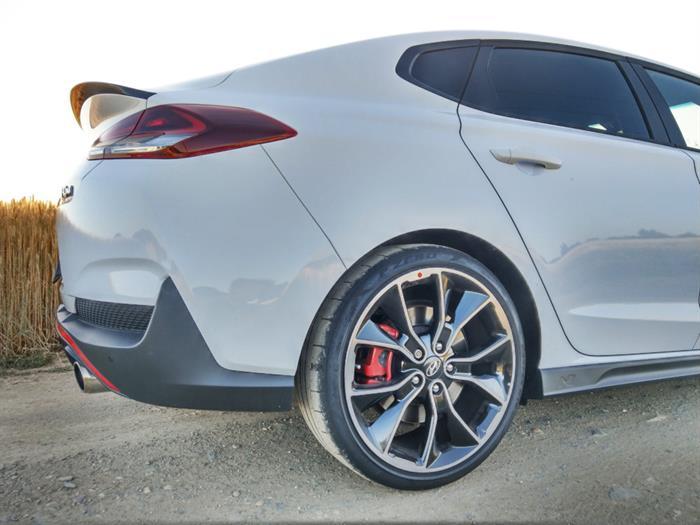
In conclusion
The "Enko" version of the Hyundai i30 offers a very interesting and favorable price policy. Looking at the current price list, I find that you can get the basic i30 Fastback N for just 719,990 CZK including VAT as part of the promotional price.
N Performance, which passed our editorial test, and which, in addition to the classic "enka", offers nineteen-inch wheels, a two-liter engine with a power of 202 kW / 275 hp, an electronically controlled differential, reinforcement of the luggage compartment, larger brake discs and a variable valve of the exhaust system, then, paradoxically, you only get 40,000 CZK more expensive, i.e. for the amount of 759,990 CZK including VAT.
The I 30 N Performance is a car that has certainly succeeded and thus created many a wrinkle on the forehead of its competition. This unique car can be incredibly fierce, fast and fun, but on the other hand, thanks to the great variety of its driving modes, very flexible and usable on a daily basis.
You just can't help but fall in love with the Hyundai i30N Performance. As a result, it really doesn't matter if it's a classic hatchback or a new fastback. However, the classic hatchback has a certain advantage, and that advantage is that it was simply the first "enke".

